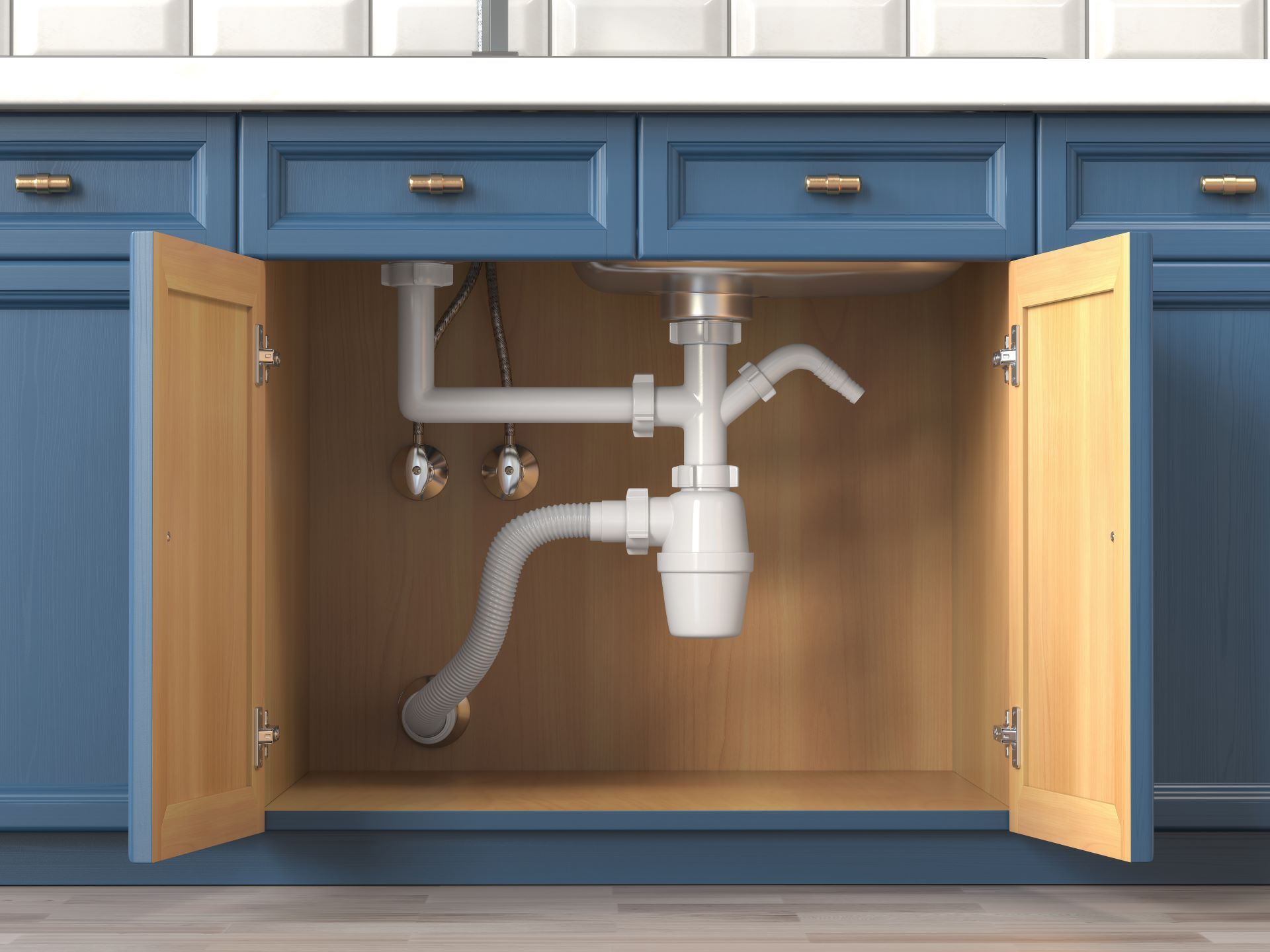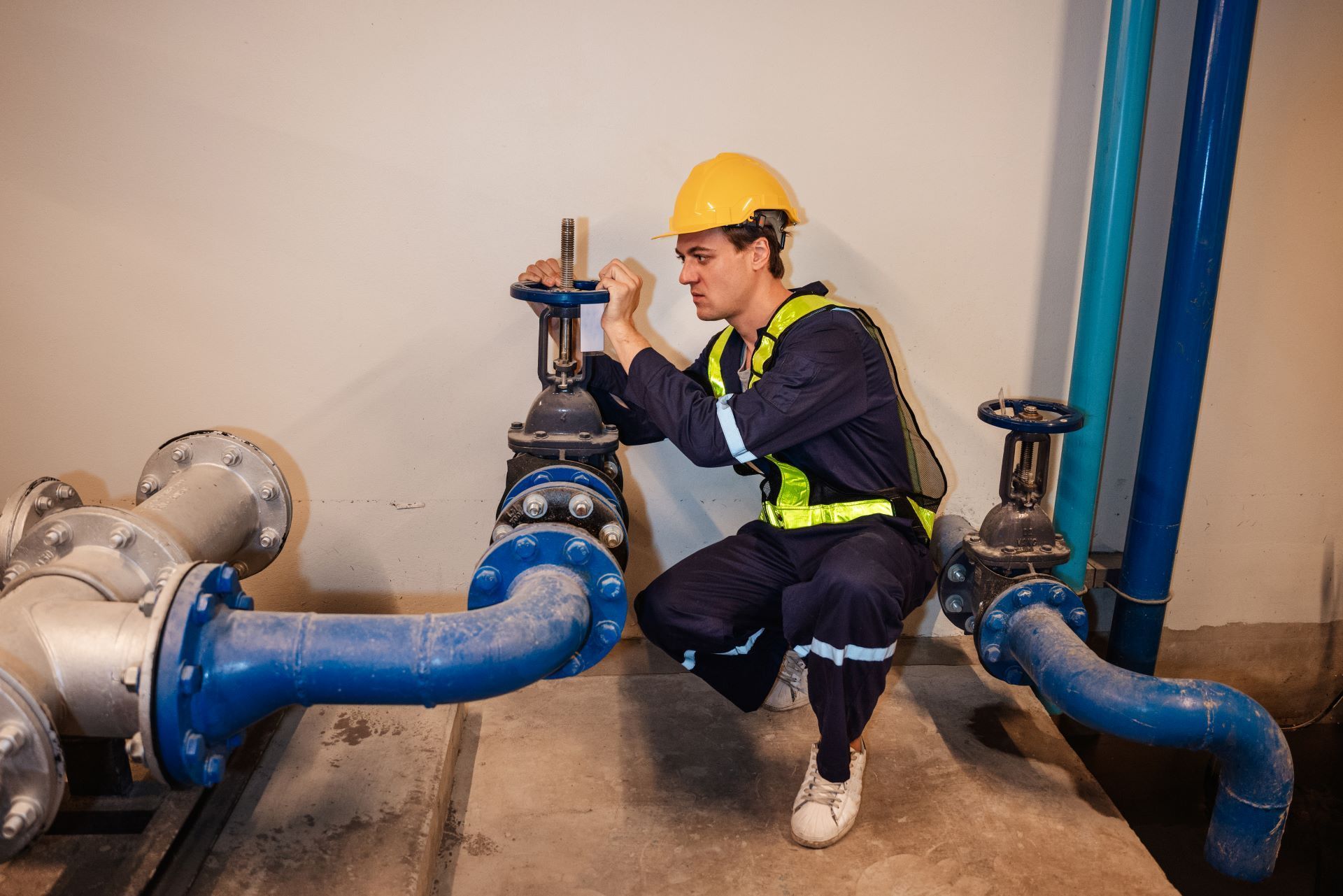Join the Lutz Loyalty Club and start saving today!
The Problem of Pinhole Leaks
Oct 03, 2016
Since the mid-20 th century, the majority of new plumbing systems have been comprised of copper pipes. There’s a number of reasons for this. Mainly, it’s that the previous options of iron or lead were unsatisfactory. Iron rusted and lead was toxic. Copper is resistant to corrosion, and doesn’t bleed into the water supply. This has made it the new standard for plumbing. However, it is not perfect. Let’s take a look at one of the biggest problems for copper pipes, and the damage it can cause.
Pitted Corrosion
Despite its resistance to oxidization, copper pipes are not immune to everything. Pitted corrosion is the result of chlorine particles interacting with the copper in the pipes. The corrosion tends to be focused on a relatively small area, allowing it to eat through the pipe fairly quickly and open up a very small leak. These tiny leaks are called pinhole leaks. A pinhole leak is only large enough to release a small amount of water at a time. Even with just a few drops, though, it can cause quite a bit of damage if certain steps are not taken.
Pinhole Leaks
The problem with pinhole leaks is that they’re so small they don’t give off any kind of warning symptom. So, they tend to slip by unnoticed for months while they slowly rot out the area around them with water damage. The first time most homeowners discover that they have a pinhole leak, it’s usually because they notice the massive amount of damage that it’s caused. The only way to prevent this from happening is to schedule regular plumbing maintenance services at least once a year.
Lutz Plumbing, Inc. provides comprehensive plumbing maintenance and inspection services throughout Kansas City, MO. If you need plumbing services of any kind, call today to schedule an appointment with one of our plumbers.
Share Post
Download the Lutz Plumbing App!
Schedule a Service
Membership Access
Access to Exclusive Offers
Manage Financing
... And More!
Free Safety Inspection
Free Extended Warranties
15% Discount
Free Priority Service
Member Only Specials
No Extra Charges for After Hour Service
Hundreds of Five-Star Reviews
Read why happy customers choose us over and over again.
When you have a
plumbing problem in the Kansas City area, you can rely on Lutz Plumbing to be have 24 hour response time. We are a local, family-owned business who shows up on time and ready to tackle your plumbing problems head on.
From leak detection to water heater service and installation, Lutz Plumbing gives you prompt, efficient and high quality plumbing services from knowledgeable technicians.
Read more about what hundreds of customers like you are saying about our five-star service, or call us today at
913-888-9500 and tell us about your problem today.

Dan
"We called at 6:30 on Sunday evening and Brent was at our door at 7:25 and was extremely professional and completed the work in a clean manner. We will be called Lutz Plumbing moving forward!"
Read All Reviews →
John K.
"The employees are always on time and very knowledgeable about the work to be completed. Very impressed, as always."
Read All Reviews →
Amanda
"I called 27 different plumbers at 11 at night, no one could come or they didn't answer. Brent called back 3 minutes later and came right out and fixed it right away. The price was less than other's day prices, so glad you are in business. I will always use Lutz plumbing from now on."
Read All Reviews →
Articles for Homeowners

Find Your Service Location
List of Services
-
Belton, MOBelton, MO
-
Blue Springs, MOBlue Springs, MO
-
Bonner Springs, KSBonner Springs, KS
-
De Soto, KSDe Soto, KS
-
Eudora, KSEudora, KS
-
Excelsior Springs, MOExcelsior Springs, MO
-
Gardner, KSGardner, KS
-
Gladstone, MOGladstone, MO
-
Grain Valley, MOGrain Valley, MO
-
Grandview, MOGrandview, MO
-
Independence, MOIndependence, MO
-
Kansas City, KSKansas City, KS
-
Kansas City, MOKansas City, MO
-
Lansing, KSLansing, KS
-
Lawrence, KSLawrence, KS
-
Leavenworth, KSLeavenworth, KS
-
Leawood, KSLeawood, KS
-
Lee's Summit, MOLee's Summit, MO
-
Lenexa, KSLenexa, KS
-
Liberty, MOLiberty, MO
-
Linwood, KSLinwood, KS
-
Merriam, KSMerriam, KS
-
Mission, KSMission, KS
-
North Kansas City, MONorth Kansas City, MO
-
Olathe, KSOlathe, KS
-
Overland Park, KSOverland Park, KS
-
Parkville, MOParkville, MO
-
Platte City, MOPlatte City, MO
-
Prairie Village, KSPrairie Village, KS
-
Raymore, MORaymore, MO
-
Roeland Park, KSRoeland Park, KS
-
Shawnee, KSShawnee, KS
-
Spring Hill, KSSpring Hill, KS
-
Tiffany Springs, MOTiffany Springs, MO
Local Office
21961 W 83rd St
Lenexa, KS 66227
Contact
Office Hours
Monday - Friday: 8a - 6p
Saturday: 8a - 4p
24 Hour Response
License
#20202383
Financing














